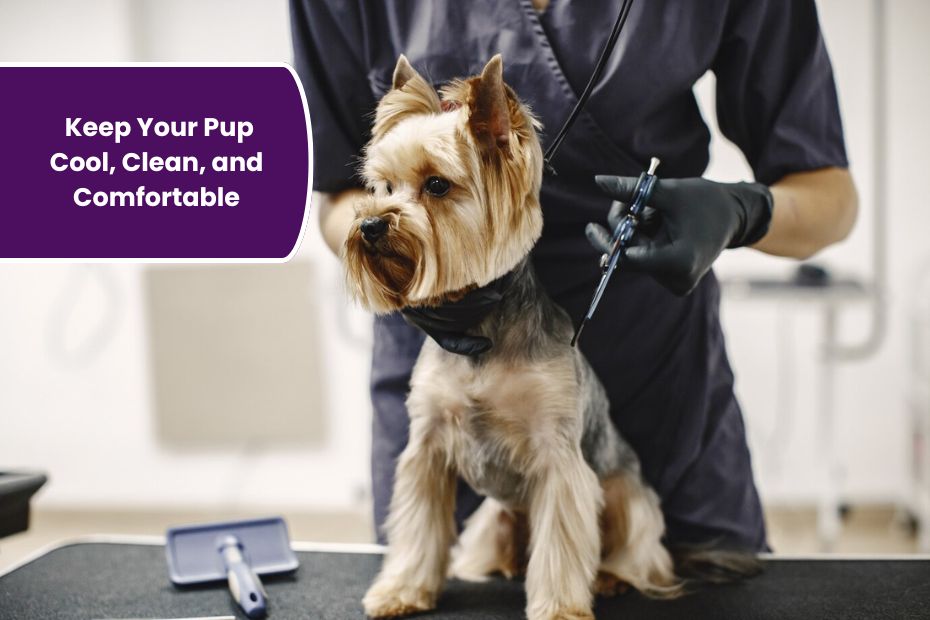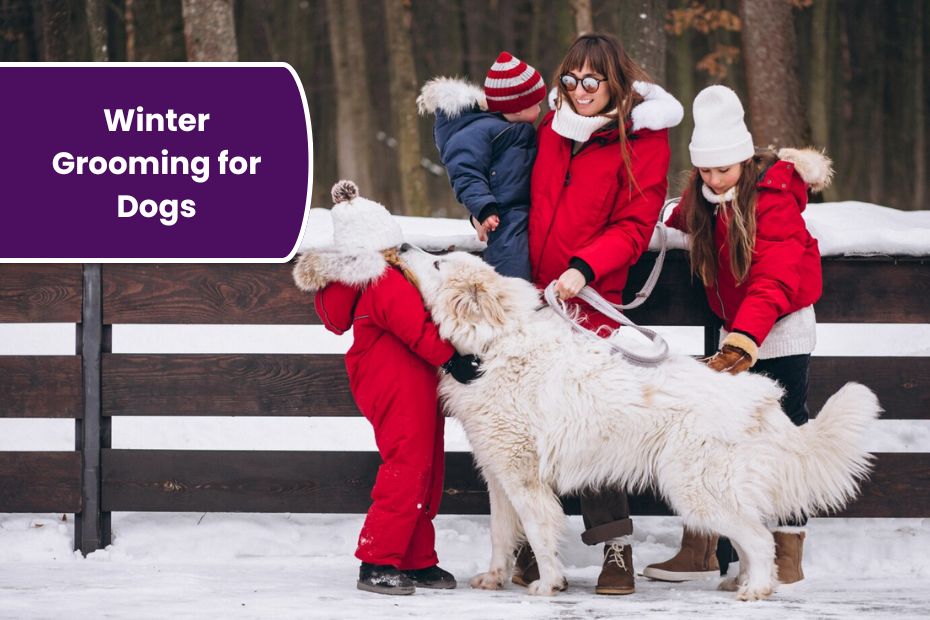A key component of pet care, grooming guarantees dogs stay clean, healthy, and comfortable. Grooming aggressive dogs, however, presents significant difficulties requiring patience, knowledge, and specific methods. Because aggressive behavior during grooming usually results from fear, anxiety, or past traumatic events, owners and groomers must approach the process carefully.
This book offers a thorough road map for gently grooming aggressive dogs using current trends and professional knowledge to produce a good experience. We will show how to turn grooming into a stress-free habit from knowing the underlying causes of aggressiveness to using contemporary tools and techniques. Whether you have pets or work as a professional groomer, this post provides useful techniques to properly manage aggressiveness while giving the dog first priority.
Given the fast changing pet grooming sector, success depends on keeping current with creative ideas and trends. Let’s explore the key actions and factors to be taken into account while grooming aggressive dogs so that everyone engaged will be safe and comfortable.
Understanding Aggressive Behavior in Dogs
Often brought on by anxiety, tension, or discomfort, aggression in dogs while grooming may show up as snarling, snapping, biting, or too strong resistance. Good management depends on the fundamental cause being found. A dog might react aggressively, for example, from pain in sensitive places like paws or ears, from fear in strange surroundings, or from traumatic past grooming events.
Recent research show that grooming success is much influenced by behavioral problems including anxiety or fear of handling, especially in breeds with long coats like Shih Tzus or Poodles. Knowing these cues helps grovers to customize their technique. A dog who links grooming tools with pain, for instance, could need slow desensitization. Predicting and stopping aggressive outbursts depends on observing body language such tensing, yelping, or snarling.
Professionals stress that aggressiveness is an indication of discomfort rather than of a “bad” dog. Whether via environmental changes or behavioral instruction, groomers may build a safer and more cooperative experience by tackling the fundamental reason. This fundamental information prepares one to apply efficient calming and handling strategies.
Calming Techniques for Aggressive Dogs
Grooming an aggressive dog calls for a quiet environment. A pillar method, positive reinforcement uses toys, prizes, or praise to reward calm conduct, therefore enabling the dog to link grooming with good experiences. Before grooming, getting the dog moving—a walk, for example—helps to release pent-up energy and lower anxiety. By gradually introducing grooming tools—such as allowing the dog to sniff brushes or clippers—you help to create familiarity and lower apprehension.
Recent trends show that stressed dogs are calmed down during grooming sessions by pheromone collars or anxiety-reducing jackets. Relaxation can be improved even more by a calm, distraction-free grooming area with natural light. Short, frequent grooming sessions are more successful than longer ones for very nervous dogs in averting overwhelm.
To provide a peaceful environment, some groomers play soft music or open windows. Though these should be a last resort, seeing a veterinarian about organic calming pills or drugs may be required if aggressiveness continues. Rooted on empathy and tolerance, these techniques help aggressive dogs turn grooming into a manageable, even pleasant activity.
Safe Handling Techniques for Grooming
Grooming an aggressive dog calls both accuracy and prudence to guarantee safety for the groomer as well as the dog. Appropriate restraint methods, including a firm but light hold, stop unexpected motions without inflicting pain. One should avoid using too much force since it could aggravate aggressiveness. Watching the dog’s body language—such as bared fangs or pinned ears—helps groomers to predict and handle possible aggressiveness.
De-escalating tension depends on breaks taken when symptoms of stress show. For dogs prone to biting, well fitted muzzles can be a safe tool allowing them to breathe and drink safely. Among recent developments are the adoption of padded muzzles and harnesses meant for low pain. Dogs may view direct eye contact as a danger, hence groomers should approach from the side instead than towering over the dog.
A relaxing grip during sensitive activities like nail cutting helps dogs with past pain during grooming avoid reactive bites. These methods and a confident but subdued approach create a safe space for effective grooming.
Tools and Equipment for Aggressive Dogs
Grooming aggressive dogs requires the correct tools to reduce stress and suffering. Choosing quiet, premium clippers or pet-safe nail grinders is advised since sharp, loud clippers can cause anxiety. Nail grinders, for example, gradually smooth nails, therefore lessening the pain caused by conventional clippers. To prevent pulling or irritation, brushes should be used according on coat type: rubber curry brushes for short coats and slicker brushes for long-haired breeds.
Gentle on sensitive skin, recent trends highlight environmentally friendly and ergonomic tools such sustainable shampoos and brushes created from recyclable materials. Efficiency and pet comfort are driving high-tech technologies include low-noise pet dryers and tracking progress grooming apps to become more and more popular.
Tools should be presented gently to aggressive dogs so they may examine them first before usage. Safety tools include anxiety coats or padded muzzles help to lower stress even further. Purchasing premium, pet-specific items guarantees a better grooming experience, so reducing triggers and improving the comfort of the dog.
Desensitization and Counter-Conditioning
Two very effective methods for lowering aggression during grooming are desensitization and counter-conditioning. Desensitization involves gradually introducing grooming stimuli—such as the sound of clippers or the touch of a brush—in a non-threatening way. Start with brief sessions praising the dog with goodies or praise for staying quiet, then progressively enhance the intensity or length of time.
To rewire the dog’s emotional reaction, counter-conditioning combines unpleasant triggers with positive experiences—like food during nail trimming. For instance, rewarding a dog with a brief touch on their paw will help to create stress-free nail trims. Older canines or those with bad grooming experiences especially should be patient in this process. Recent trends indicate that groomers track desensitization development using mobile apps, therefore guaranteeing consistency.
By breaking out grooming chores into smaller sessions—brushing one day, nail cutting another—you avoid overwhelm. Starting early—ideally throughout puppyhood—these methods are most successful; nevertheless, with constant effort dogs of any age can benefit from them. Developing trust helps desensitization and counter-conditioning produce long-lasting changes in grooming tolerance.
Professional Grooming vs. At-Home Grooming
The temperament of the dog, the owner’s degree of expertise, and the resources at hand will help one decide between professional and at-home grooming for an aggressive dog. Professional groomers are taught to manage aggressive behaviors by use of certain instruments such as muzzles and harnesses, therefore guaranteeing safety. They are skilled at controlling tension since they have expertise with several temperaments.
Professional grooming can be expensive, too, with sessions average $80; some owners find cost to be a deterrent. Though less expensive, at-home grooming calls for a lot of time and patience—especially for novices. Owners have to make investments in excellent instruments and pick correct procedures from web courses or tutorials, such those provided by Dremel for nail cutting.
Driven by financial considerations and the need for stress-free experiences for pets, DIY grooming is on trend lately. Professional grooming may be safer initially for very aggressive dogs; at-home maintenance between appointments. Choosing the right course of action requires owners to balance their confidence, the dog’s requirements, and the possibility of stress.
Recent Trends in Aggressive Dog Grooming
The pet grooming business is changing in line with trends improving the experience for aggressive pets. Gentle formulas of eco-friendly products—such as cruelty-free shampoos and sustainable brushes—are attracting attention for their fit for sensitive canines. Rising in popularity for their convenience and familiar surroundings that help aggressive dogs relax are mobile grooming services.
Low-maintenance cuts or artistic designs like teddy bear trims allow creative grooming—that which mixes aesthetics with utility—to appeal to busy owners. With quiet clippers, pet dryers, and applications for booking or tracking grooming regimens becoming standard, technology is also changing grooming. Furthermore addressing both physical and psychological demands is wellness-oriented grooming, including holistic techniques such as massage oils or paw pad treatment.
Emphasizing comfort and health, these trends show a turn toward customized, pet-centric treatment. By better serving aggressive dogs, groomers implementing these ideas can produce customized solutions reducing stress and improving well-being.
Emergency Preparedness for Grooming Aggression
Even with greatest intentions, grooming aggressive dogs might lead to an incident. To guarantee safety, one must be ready. Should a dog grow unruly, cease the session right away and let them cool up. Crucially, one should know fundamental first aid for dog bites: wound cleansing and, if needed, medical treatment seeking. Professional assistance from a qualified dog trainer or veterinary behaviorist may be required to handle underlying problems for extreme aggressiveness.
Recent advances include the use of technology, including apps that alert owners of problems like fleas or ticks during grooming, therefore allowing rapid reactions. Groomers should have easily available emergency contact numbers including those of the owner and a neighboring veterinarian. To control unexpected outbursts, safety tools including muzzles or calming jackets should be handy.
De-escalation training—that is, employing a soothing voice or presenting treats—helps to stop escalation. Anticipating worst-case situations and becoming ready helps groomers and owners to reduce risks and guarantee a better grooming experience.
Grooming Frequency and Maintenance
Aggressive dogs must be regularly groomed if they are to avoid health problems like matting or overgrown nails, which can aggravate discomfort and behavior. While short-haired dogs gain from monthly washes, long-haired breeds—like Shih Tzus or Maltese—need professional or at-home grooming every 4-8 weeks. Long coats should be brushed daily; for short coats, brush once a week to distribute natural oils and avoid tangles.
Every three to four weeks, nail cutting helps to reduce discomfort; ear cleaning should be done carefully to prevent infections. Short sessions broken out across the week help aggressive dogs stay under less stress. Using slicker brushes or nail grinders, owners can augment expert grooming with at-home upkeep.
Emphasizing the need of consistency, recent studies reveal that 60% of dogs need regular grooming every 6 to 8 weeks. Establishing a schedule catered to the coat type and temperament of the dog helps owners to reduce triggers and properly preserve the health and cleanliness of their pet.
Table: Grooming Tools for Aggressive Dogs
| Tool | Purpose | Best For | Features | Trend |
|---|---|---|---|---|
| Quiet Clippers | Trimming hair without noise stress | Long-haired breeds | Low-noise, ergonomic design | High-tech, pet-friendly |
| Nail Grinder | Smoothing nails gradually | Dogs sensitive to clippers | Low vibration, adjustable speeds | Rising in DIY grooming |
| Slicker Brush | Removing tangles and mats | Long, curly coats | Gentle pins, eco-friendly materials | Sustainable, pet-safe |
| Padded Muzzle | Preventing bites during grooming | Highly aggressive dogs | Breathable, comfortable fit | Safety-focused innovation |
| Pheromone Collar | Reducing anxiety | Nervous or stressed dogs | Calming scent, reusable | Wellness-focused trend |
This table outlines essential tools for grooming aggressive dogs, highlighting their purpose, ideal use, features, and alignment with current trends.
FAQs
What causes aggression in dogs during grooming?
Aggression during grooming is often triggered by fear, anxiety, pain, or past negative experiences. Sensitive areas like paws or ears, unfamiliar tools, or loud noises can also provoke reactions.
How can I calm my aggressive dog before grooming?
Use positive reinforcement with treats or praise, engage in pre-grooming exercise, and introduce tools gradually. Creating a quiet, familiar environment and using pheromone collars can also help.
Are muzzles safe for aggressive dogs during grooming?
Yes, when properly fitted, padded muzzles allow dogs to breathe and drink while preventing bites. They should be used only as needed and removed immediately after grooming.
Should I groom my aggressive dog at home or professionally?
Professional groomers are better equipped for highly aggressive dogs, but at-home grooming can work with proper tools and training. Consider your skill level and the dog’s needs.
| Home Page | Click Here |
| Dog Grooming | Click Here |


